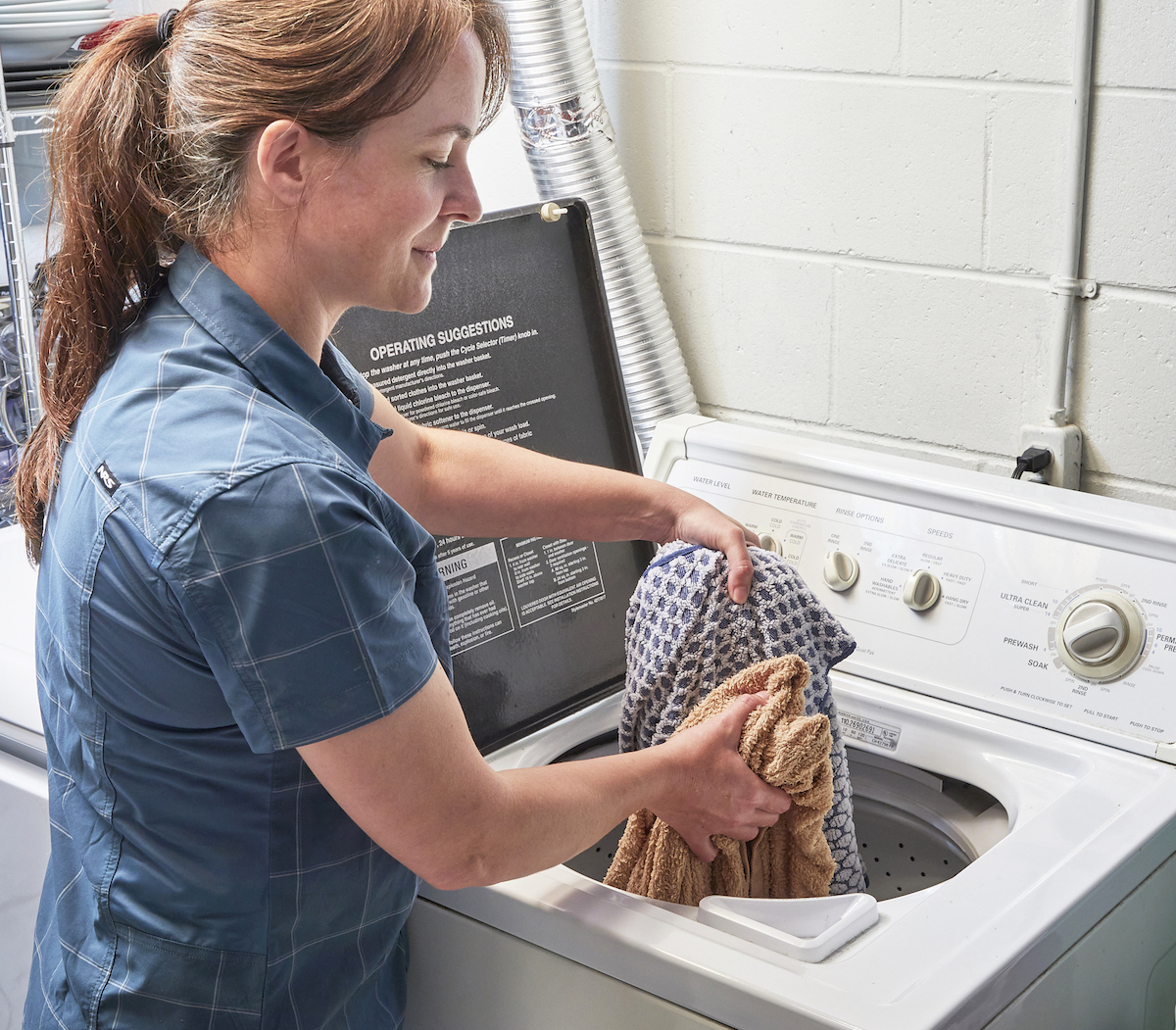We may earn revenue from the products available on this page and participate in affiliate programs. Learn More ›
Sopping wet clothes at the end of a wash signals that your washer won’t spin. Depending on the model and age of your machine, there are likely a number of reasons why the washer won’t spin: You might have a defective lid switch or a clogged hose, for example, both of which can be addressed with DIY solutions. Before you start replacing parts, you’ll want to review common reasons for the problem. After all, a good washer and dryer makes life a lot easier.
Possible Reasons Why Your Washing Machine Won’t Spin
If this is the first time you’ve had a problem with a washer not working on spin cycle, you might be worried about major repairs. The good news is that most of the time, the cause is a straightforward fix that you might be able to complete yourself. These are possible reasons why your washer won’t spin—and might not be draining, either.
- The load is too heavy or off-balance, especially if you are cleaning something unusual in the washing machine.
- The machine is not sitting level on its legs or pedestal.
- The power source is cut off or compromised.
- The spin switch under the lid is stuck or broken.
- You used non-HE detergent in a front-load washer.
- The drainage hose has a kink, or the drainage system is blocked.
- The drive belt needs to be replaced or adjusted.
How to Fix a Clothes Washing Machine That Won’t Drain or Spin
Learning how to fix a washing machine that won’t spin is a useful DIY skill for any homeowner. Sometimes, the machine won’t drain either, and these troubleshooting tips should help you get the bottom of both these issues. However you choose to address your particular washing machine problems, make sure you follow safety precautions and unplug the machine before you make any interior repairs.
Check the power source.
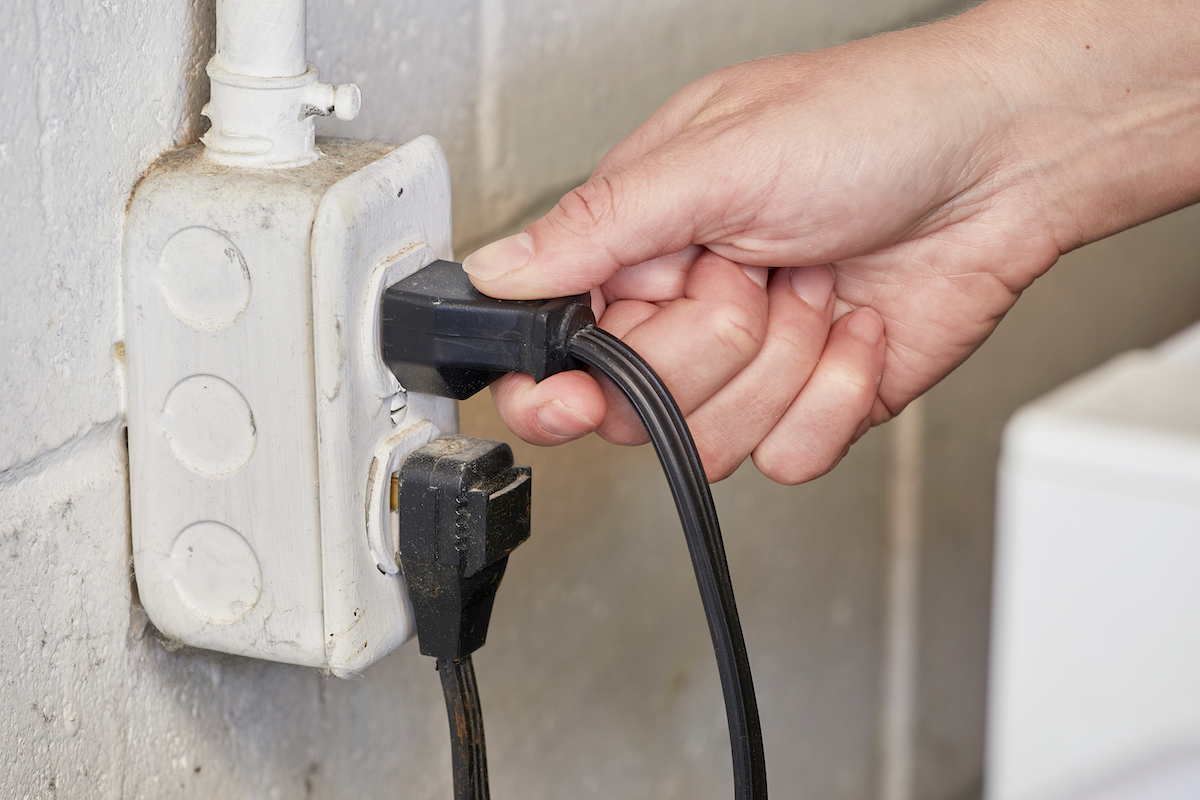
While it may seem like a no-brainer, double-check that the washer is plugged in. A mid-cycle bump or jiggle could have caused the plug to work its way out of the outlet, and plugging it back in might put you back in business. If the power cord is secure in the outlet, check your home’s circuit panel to ensure that a breaker didn’t trip.
Redistribute an off-balance load of laundry.

An unbalanced load of laundry is one of the most common causes of an inadequate spin cycle. Sometimes clothing can settle on one side of the drum, throwing off the motion of the washing machine. (This happens most often when washing large and heavy items like comforters or heavy coats.) Moreover, some newer machines won’t reach high speeds if the loads are off-balance, which leaves clothes dripping wet. If you suspect a distribution problem, try rearranging your clumped-up wet laundry and running the spin cycle again.
Level off-kilter machine legs or pedestal.
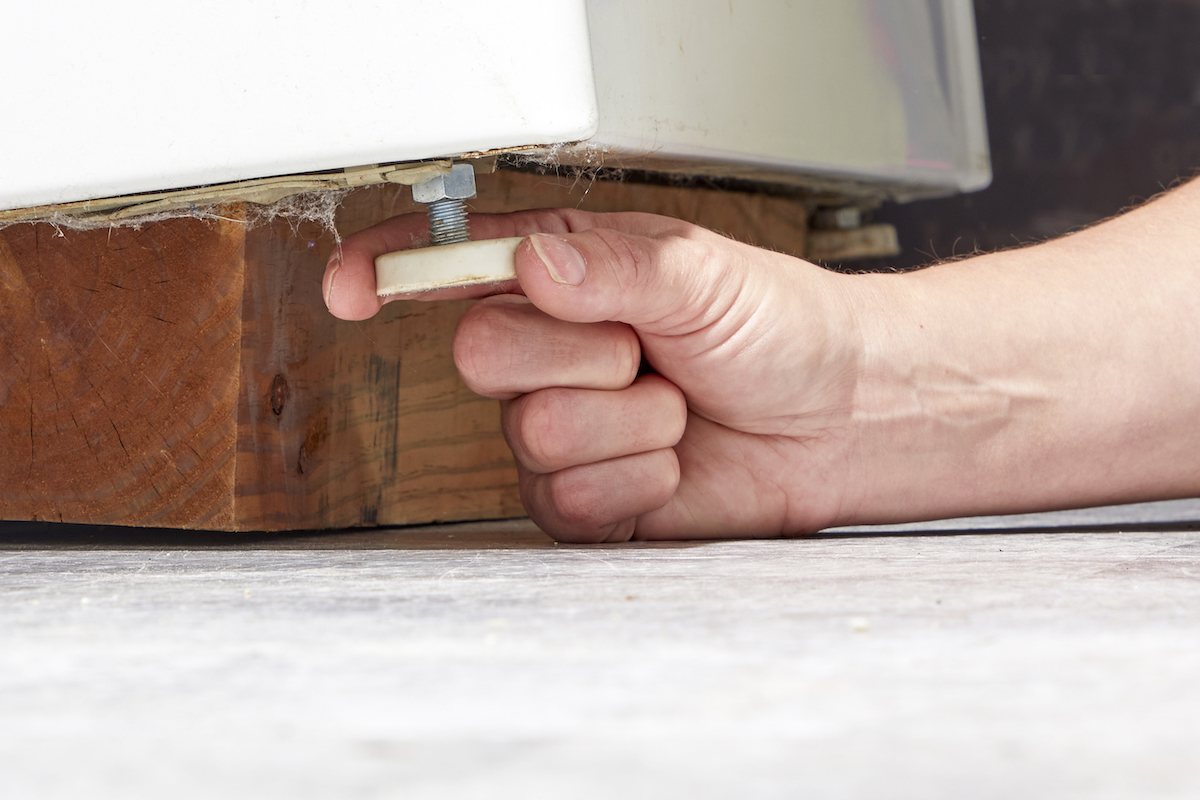
If it’s positioned unevenly on its adjustable pedestal, your washer won’t spin properly. Look for other signs of a machine that’s not level, including excess noise and vibration during the washing process. If you find any, adjust each individual leg higher or lower until the washer is completely level.
Stop using an extension cord.
The heavy-duty power cord to your washer should be plugged directly into an outlet, not into an extension cord. Many extension cords can’t conduct enough electricity to power the washer’s motor, which can subsequently overheat and shut itself off. The washer will probably function again after the motor cools, but the problem will likely occur again. Relying on an extension cord can also shorten the useful life of the washer. If you can’t move the washing machine closer to an outlet, have a new outlet wired within a reasonable distance of the washer.
Inspect the spin switch.
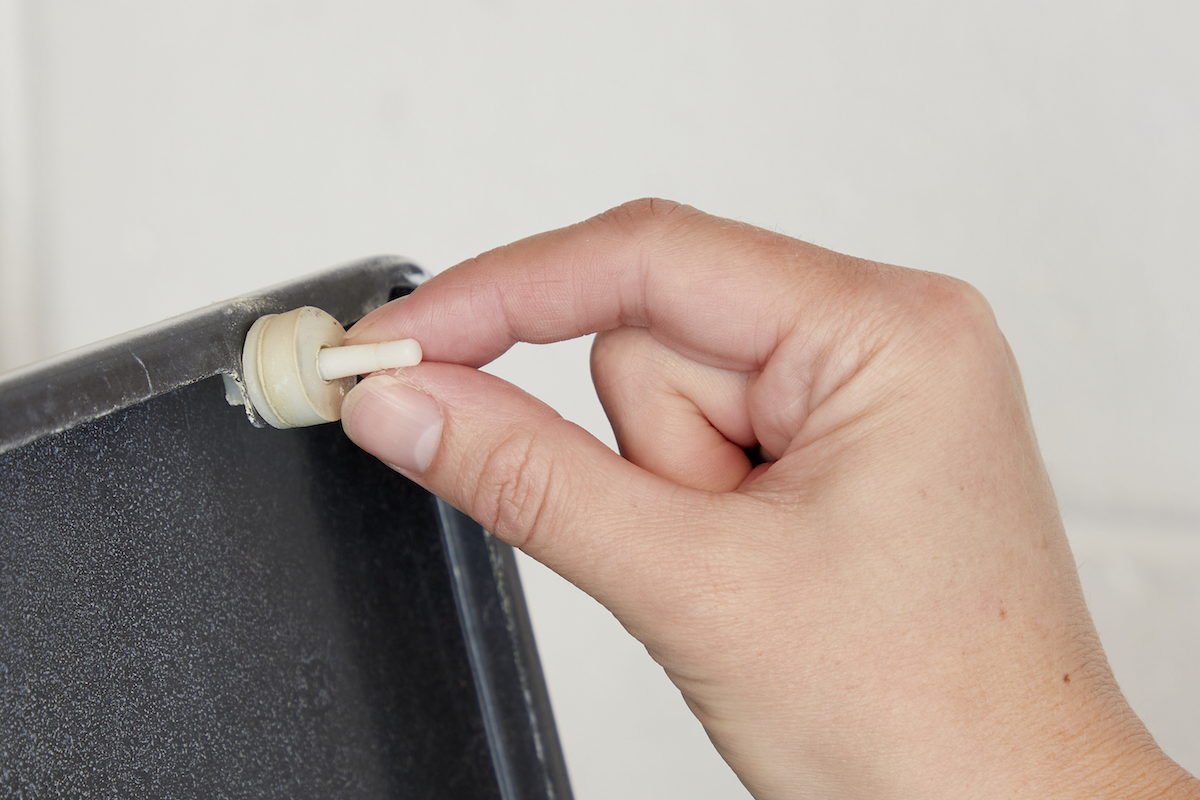
In a top-loading washer, a small protrusion on the underside of the lid depresses a switch when you close the lid, serving as a safety precaution to detect when the lid is closed. If the protrusion has bent out of shape, it may not trigger the switch as intended.
Test the theory by opening the lid, selecting the spin cycle on your washer, and then manually depressing the switch with a finger. If the machine starts spinning normally, simply re-bend the protrusion so it triggers the spin switch properly.
Did your washer not spin when you pressed the switch manually? The problem could stem from a defect in the switch itself. Fortunately, replacing a broken spin switch can be a DIY-friendly project, depending on the washing machine brand and model. Consult your owner’s manual for instructions.
Stick to high-efficiency detergent with a front-load washer.
You may not realize it, but most front-loading washers require high efficiency (HE) detergents with low foaming action. Otherwise, non-HE detergents may produce so many suds that the machine’s sensors perceive the washer as too full. As a result, the washer won’t reach adequate spin speeds, leaving your clothes dripping wet at the end of the cycle.
Undo kinks in the hose.
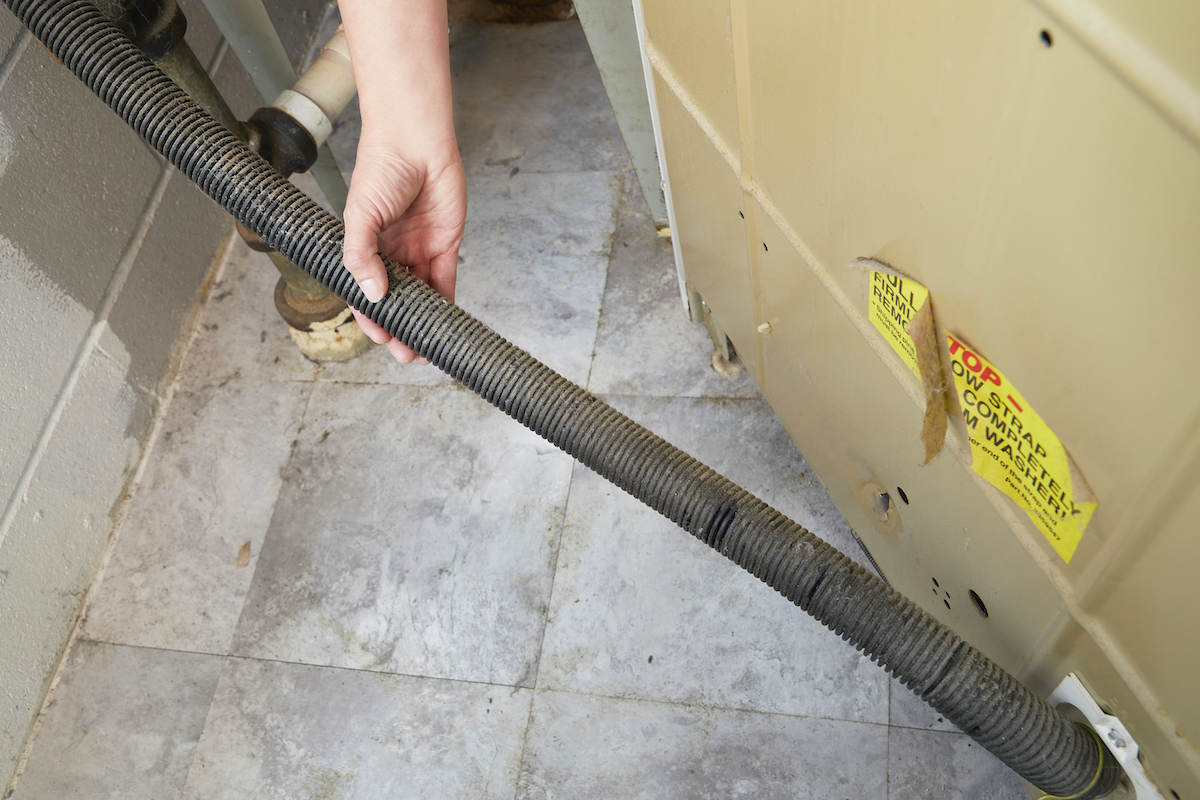
This would hinder water flow to and from the appliance, resulting in a washer that starts the spin cycle but never picks up speed and doesn’t drain water. Pull out the washer to look behind it and check that the hose is kink-free, then carefully push the machine back into place so that you do not inadvertently crimp the hose again.
Track down a blockage in the drainage system.
Small items—like pennies, keys, buttons, or clothing clips—can fall out of pockets and off of clothing, and lodge themselves in the hoses that attach the washer to the drain pump. Ultimately, the blocked drainage prevents the machine from spinning.
In some washers, the drain pump (typically located in the back of the washer, near the floor) can be accessed without removing the back of the washer, while other models require you to detach the washer back. Consult your owner’s manual for model-specific instructions. Then remove the clamps that hold the hoses in place, clear any clogs that you find, and reattach the hoses.
If your washer sat with water inside for any length of time, review our essential tips for fixing a smelly washing machine to ensure clean results when it’s up and running again.
Replace or readjust the drive belt.
A broken drive belt, or one that has slipped off the pulley wheel, can cause the washer to agitate during the wash cycle and yet—despite the noise of the motor running—the drum remains still during the spin cycle. To determine if this is the case, remove the back of the washer and visually check to see if the belt is still on the pulley. If not, you may need to replace the drive belt. Be sure to purchase one that’s made specifically for your brand and model of washer.
If you’re still stumped about why your washer won’t spin, call an appliance expert.
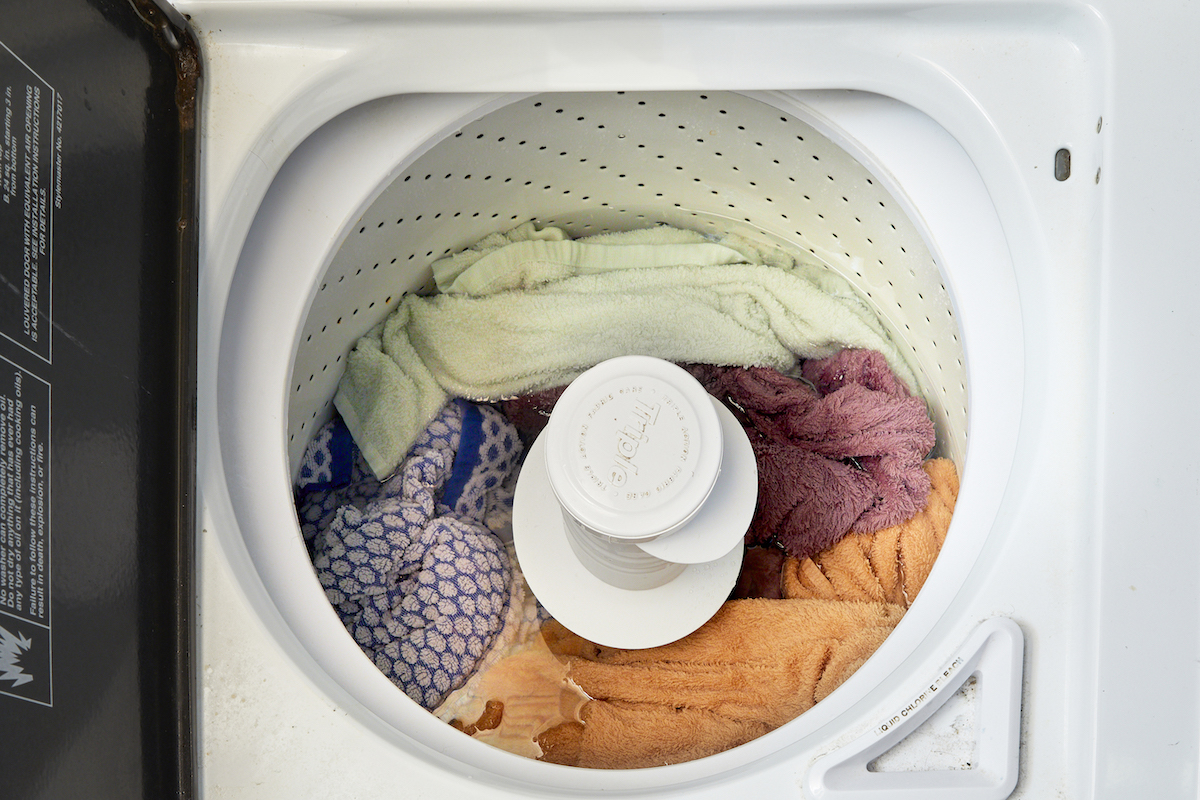
If any of the following is true of your washer, the problem you have is not one that we recommend DIYing. Call a professional appliance repair person to address these issues:
- The drain pump may be to blame when water won’t spin out. If you know how to use a multimeter, you can perform a continuity check on the drain pump’s motor connections to see if they’re still viable. However, that’s as far as the DIY job goes; non-functioning drain pumps will have to be replaced by a repairman.
- To determine whether the motor coupler (a small rubber and plastic connector piece located between the washer’s motor and its transmission) has broken, conduct this simple test: Set the dial on your washer to a wash cycle and turn it on, allowing the drum to fill with water. When the water reaches the fill level, agitation should begin. If you hear the motor kick on but the center agitator does not move, your machine needs a new coupler. While a replacement is in the ballpark of a mere $20, this fix is only DIY-friendly for those who are skilled in small motor repair.
- A motor that doesn’t run at all, despite good connections to the power source and breaker, could prevent a washer from spinning. Some motors contain carbon brushes that wear out over time, and those can be replaced inexpensively. However, the problem could be more extensive than a worn carbon brush, and it’s impossible to know without removing the motor and testing it. Even with the washer unplugged, induction-type motors that contain capacitors can give you quite an electric shock, so motor testing and repairs are best left to the pros.
- Some washers feature electro-mechanical transmission shifters or clutches that, when worn out, can result in washing machine leaks. This issue also requires attention from a repairman.
FAQs
Review the possible reasons for the washer spin cycle being broken, and if you can’t identify the cause on your own or don’t feel equipped to fix it, call a pro. If the problem is caused by a faulty drain pump, motor, transmission shifter, or motor coupler, a professional appliance repair service will be necessary.
If the washing machine spins but then stops spinning before the cycle is complete, common reasons include an unbalanced load, an overheated motor, and faulty timing in the draining portion of the cycle. Review the solutions above and if you cannot identify the problem, call a professional.
No, you should stop using the machine until a repair is done. Certain broken components can damage other parts of the machine if they’re allowed to continue functioning. For example, a drive belt that is cracked could break and damage surrounding parts.

